Hardcoded Memory by Troika
London Design Festival: in the first of three posts about the Digital Crystal exhibition at London's Design Museum, we look at a mechanical projector built by London design studio Troika which uses Swarovski crystal lenses and LEDs to create portraits on the gallery wall (+ slideshow).
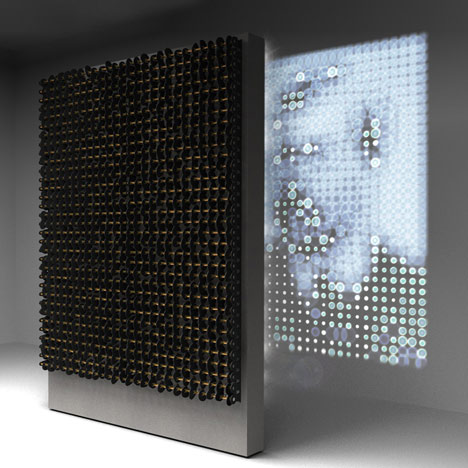
The projector uses 858 custom-cut crystal optical lenses, each positioned in front of an LED.
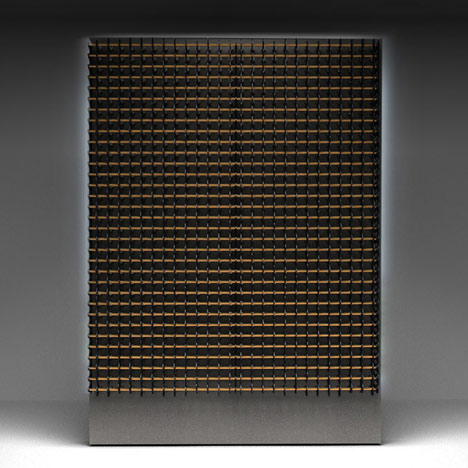
Rotating cams move each LED towards or away from its lens, diffracting the white light into variously sized spots.
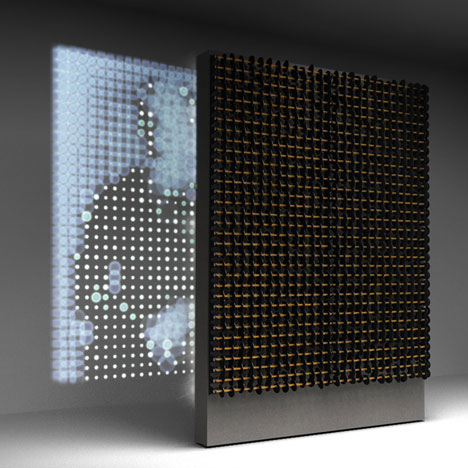
The spots of light then combine to produce three blurry, low-resolution portraits on the gallery wall.
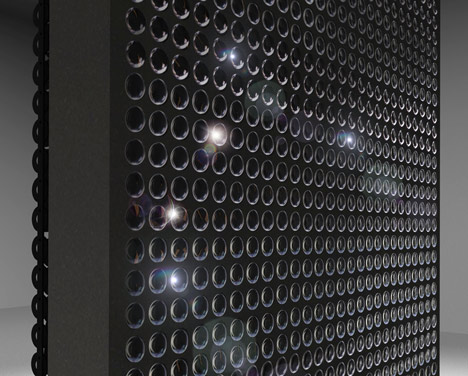
"The recent past has seen a complete shift in the reproduction and selection process of visual information, and today we no longer need to restrict which and how many images we take," Troika's Conny Freyer told Dezeen.
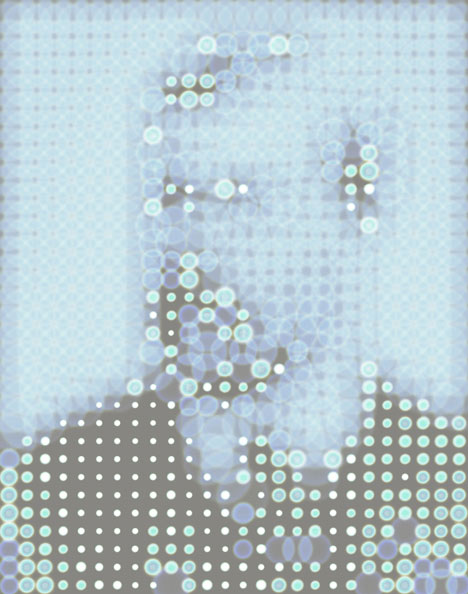
"We are on the brink of a new age, still informed by the analogue world yet provided with new digital tools," she added. "Hardcoded Memory is a reflection on that change and on the digital world by approaching it from an analogue point of view."
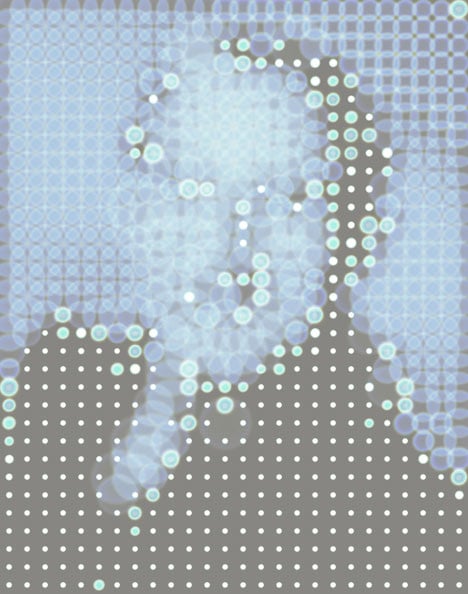
The three portraits were selected according to their postures, in a reference to the traditional posed portraiture that was prevalent throughout the last century but is seen less often today.
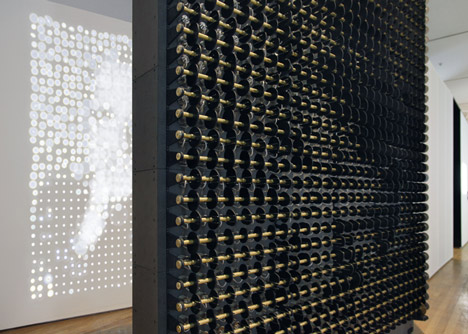
Digital Crystal: Memory in the Digital Age continues at the Design Museum in London until 13 January 2013.
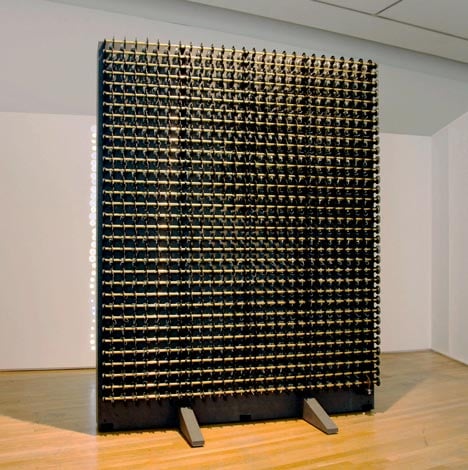
Other projects we've featured by Troika include an outdoor LED installation that displays yesterday's weather and chandeliers that project overlapping circles of light.
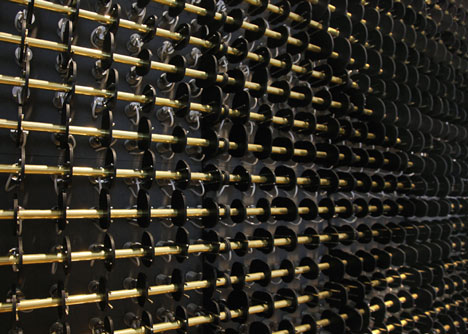
See all our stories about Troika »
See all our stories about the Design Museum »
See all our stories about Swarovski »
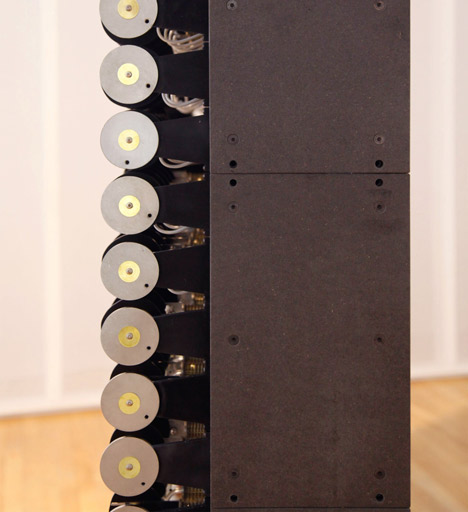
Here's more information from Troika:
Troika (Conny Freyer, Sebastien Noel, Eva Rucki)
Hardcoded Memory (2012)
2.60 m (H) x 2.0 m (W) x 0.4 m (D)
858 custom cut Swarovski crystal optical lenses, custom software, 858 LEDs, brass, anodized aluminium, dyed fibreboard.
Memory is closely linked to forgetting. Before the digital era, forgetting was easy, for better or worse. Not only is it biologically in-built to forget, the analogue world around us cannot guarantee that recorded memories will last forever.
Photographs fade, film footage can be lost and media out-dated. In the past, remembering was the exception, forgetting the default. Only a few decades ago, analogue photography was a limited edition of images taken of precious moments or the everyday: our grandparents, parents, children or ourselves. By selection, these images became meaningful, carrying the story for, and of, an extended period of time, a life, a person.
Now in the age of endless digital image reproduction there is no longer a function for a selection process, and so we do not need to forget. We externalise our memories by handing them over to the digital realm enabled through digitisation, inexpensive storage, ease of retrieval, global access, and increasingly powerful software, blurring lines of ownership and making virtual forgetting close to impossible.
Hardcoded Memory is a reflection on the moment and on time itself, standing as a metaphor for the human search for meaning and continuity, while celebrating forgetting in the digital age.
Low-resolution portraits are projected onto the gallery wall, generated by a hardcoded mechanical structure which in the nature of its construction limits the selection of available images. Custom-cut Swarovski crystal optical lenses project light from LEDs, which, motored by rotating cams, move away from, and toward to each crystal lens, transforming, through diffraction, the white light into a constellation of circular projections, creating a rhythmical fading in, and fading out of low resolution imagery on the gallery wall.
All pictorial information is hardcoded into the rotating cams of the mechanism giving a pre-determined selection of what can be displayed by the projector. And while the low resolution image is lending the portraits a universal appeal, the body posture of the portrayed informs a definite era or decade.
Experiencing the dream-like imagery on the gallery wall, the visitor is immersed in a digital memory embedded into an analog physical object, reinforcing Troika's agenda of exploring rational thought, observation and the changing nature of reality and human experience.